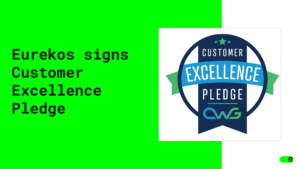By Anders Willumsen
In today’s competitive business world, standing out means providing top-notch customer experiences. While businesses usually focus on training their employees, shifting the spotlight to customer training might be a smarter move.
Studies have shown that educating and empowering your customers can lead to big wins, like boosting sales and reducing costs.
In this article, let’s dive into why training your customers is becoming more crucial than ever.
1. Boosting Your Revenue: The Power of Well-Informed Customers
A key reason to focus on customer training is its positive effect on keeping customers around. Research, like a study from the Journal of Retailing, reveals that customers who feel informed and empowered tend to be happier and more loyal. Well-educated customers understand the value and benefits of your products or services better, leading them to use them more often.
This not only builds trust but also strengthens their loyalty to your brand. Offering detailed training resources, tutorials, and workshops helps customers get the most out of their purchases.
And here’s the big benefit: loyal customers usually spend more. A Bain & Company report found that just a 5% increase in customer retention can boost profits by 25% to 95%. These customers are more likely to make repeat purchases and are even willing to pay more, all thanks to their trust in your brand.
2. Cost Efficiency: Why It’s Cheaper to Train Customers Than Employees
Training your customers often comes with a lower price tag compared to employee training. Why? Because customer training usually zooms in on specific tasks or features of a product. For instance, showing a customer how to use a particular software feature is generally quicker and simpler than the comprehensive training an employee needs, which often includes learning the entire software suite, customer service practices, and the company’s core values.
Employee training can be quite a hefty investment, with the Association for Talent Development reporting an average cost of around $1,252 per employee, factoring in the full spectrum of training.
On the flip side, customer training can be done more affordably. Think rapid onboarding, easy-to-follow online tutorials, self-help guides, and video demos.
And here’s an added bonus: customer training scales up easily. Digital platforms enable you to reach a large number of customers at once – a single webinar or tutorial can cater to countless customers at a fixed cost.
Plus, since customers generally need to learn only specific aspects of a product or service, this focused approach can further slash costs.
By tapping into learning management systems like Eurekos and other self-service tools, you can spread your training net wide without thinning your wallet. This strategic approach not only saves money but also ensures a greater return on your investment in training.
3. Saving Big on Support: How Educated Customers Cut Costs
Training your customers doesn’t just make them smarter; it also saves you a lot in support costs. Dealing with customer queries can eat up both time and money. But get this: quality customer training can shrink the need for all that expensive support. Forrester Research points out that web self-service slashes the number of customer service calls and tickets, as people find what they need online without ever having to contact you.
When your customers know how to use your product and fix minor issues, they don’t have to rely on your support team as much. And even when they do need to reach out, their better understanding means they can explain their problems more clearly, speeding up the resolution process. Quick fixes mean less time and money spent on each problem. According to the Service Quality Measurement Group, nailing that first-contact resolution not only saves operational costs but also boosts customer success.
Here’s another great benefit: customers who know your product tend to need less hand-holding from support centers. This lightens the load on your support team, freeing them up to tackle more complex issues. Plus, when you’ve got a bunch of knowledgeable customers, they often start helping each other out in online forums and groups. Take Salesforce, for example – their customer community is a goldmine of user-to-user assistance, taking some weight off their official support channels.
In short, educating your customers means they can take control of their own experience with your product, leading to a smoother ride for everyone and a healthier bottom line for your business.
4. No Customers, No Team: The Vital Role of Customer Training
It might sound like a no-brainer, but it’s always worth repeating: customers are what keep a business running. They’re the foundation that brings in the cash. Without a strong customer base, there’s no revenue, and without revenue, it’s impossible to sustain a team of employees. Sure, training your staff is important, but if you want that consistent flow of income, you’ve got to put customer training at the forefront.
Teaching customers how to make the most of your products quickly ramps up their satisfaction levels. A happy customer is more likely to make repeat purchases and spread the good word about your brand.
And guess what? This positive buzz not only brings in more customers but also ensures you have the funds to keep your employees well-trained and ready to excel. So, in a way, investing in customer training is investing in your entire business’s future.
5. Bigger Budget for All: The Ripple Effect of Successful Customer Training
Figuring out the return on investment (ROI) for customer training is pretty straightforward and quite eye-opening. Take a look at how trained customers behave versus those who aren’t. Are they buying more? Staying with your brand longer? Happier and more engaged with your products? Needing less support?
More often than not, you’ll find that trained customers are your best customers.
Once you have the numbers to prove that customer training is reducing churn and cutting down on support costs, you’ll see just how financially impactful this training is.
And here’s the best part: when you demonstrate how valuable customer training is, you’re likely to secure a bigger budget. This means more resources to train not just your customers but your employees too.
Remember, while it’s vital to have a well-trained workforce, the benefits of customer training are too significant to ignore. By educating your customers, you’re not just building loyalty or easing your support load; you’re setting up your business for greater success and a healthier bottom line.
About the author
Anders Willumsen is the visionary leader and CEO of Eurekos. His knack for innovation is evident in how he elevated Eurekos from a training and consulting firm to a top-tier LMS provider for customer and channel partner education. To learn more about Eurekos, visit eurekos.com.










































